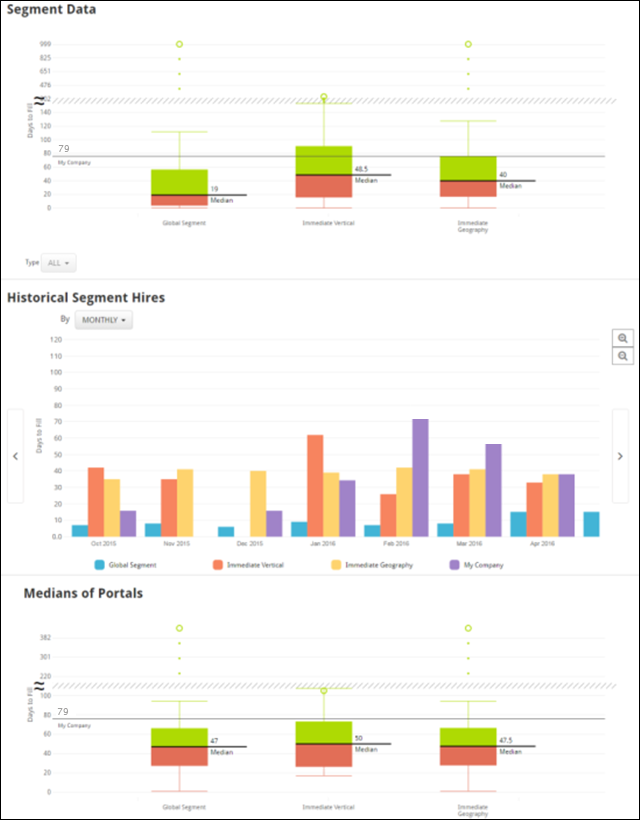Time to Fill - Segments
The Time to Fill segments page displays three different charts:
- Segment Data
- Historical Segment Hires
- Medians of Portals
In addition to the charts described on this page, each metric's Segments page allows you to view and configure verticals and view metric details. See Benchmark Segments Overview.
To access the Time to Fill segments page, go to and click the Time to Fill report widget.
| PERMISSION NAME | PERMISSION DESCRIPTION | CATEGORY |
| Benchmark Total Access | This permission provides total access to the Benchmark metrics and functionality. | Benchmark - Administration |

Segment Data
The Segment Data chart displays the average number of days it took to fill a requisition, by segment. The My Company line displays the average number of days it took your organization to fill a requisition, compared to its peers. Requisitions across all portals are included in the segment.
To select a requisition type, click the Type drop-down menu below the Segment Data chart and choose a requisition type from the list. The chart data will refresh accordingly.
Historical Segment Hires
The Historical Segment Hires bar chart displays the average numbers of days to fill a requisition, constrained by the selected time interval. This is the same data displayed in the Segment Data chart above, except the Historical Segment Hires chart shows how the data across segments has changed over time.
To change the time interval for the chart, click the By: drop-down menu and choose from the following time intervals:
- Month
- Quarter
- Year
After selecting a new time interval, the chart data will refresh accordingly.
Medians of Portals
The Medians of Portals box provides helpful data when there are portals in the Segment Data chart that might be skewing the data. For example, if there is a segment with five organizations, and four out of the five organizations have a median of 30 days to fill a position, but one of the five has many more filled positions than the others, and also has a median of 200 days to fill, the organization that takes 200 days to fill positions may skew the data. To avoid potentially skewed data, the Medians of Portals chart uses the median time to fill of each portal, rather than the time to fill of all positions in the entire segment. By using the Medians of Portals chart, you can avoid potentially skewed data, as this chart displays the medians of medians.